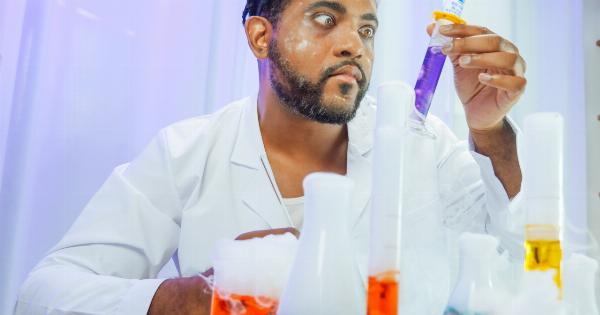Toothpaste is an essential component of oral hygiene. It plays a crucial role in maintaining oral health by combating dental plaque, preventing tooth decay, and keeping the gums healthy.
However, there have been growing concerns about the chemicals present in toothpaste formulations and their potential impact on human health. This article aims to shed light on these chemical concerns and provide an understanding of their implications.
1. Fluoride
Fluoride is a common ingredient found in toothpaste formulations, and it has been widely used for its proven effectiveness in preventing dental caries.
However, excessive fluoride intake can lead to a condition called dental fluorosis, which causes discoloration and mottling of the tooth enamel. It is essential to use fluoride toothpaste in moderation and ensure that young children do not ingest excess amounts.
2. Triclosan
Triclosan is an antimicrobial agent commonly found in toothpaste to fight bacterial growth and prevent gum infections. However, concerns have been raised about the potential long-term health effects of triclosan.
Studies suggest that prolonged exposure to triclosan may contribute to antibiotic resistance and disrupt hormone regulation in the body. It is advisable to consider triclosan-free toothpaste alternatives.
3. Sodium Lauryl Sulfate (SLS)
Sodium Lauryl Sulfate (SLS) is a foaming agent used in toothpaste to create the desired lather effect. While SLS is generally safe for most people, it can cause irritation and mouth sores in individuals with sensitive gums or mucous membranes.
Toothpaste formulations without SLS are available for those who experience these adverse effects.
4. Artificial Sweeteners
Many toothpaste brands incorporate artificial sweeteners to enhance taste and make brushing more enjoyable.
However, some artificial sweeteners, such as saccharin and aspartame, have sparked concerns due to their potential link to health issues like cancer. Opting for toothpaste with natural sweeteners or no sweeteners is a wise choice.
5. Abrasive Agents
Abrasive agents are included in toothpaste to help remove surface stains and dental plaque. While they are generally considered safe, excessive or aggressive use of abrasive toothpaste can lead to enamel erosion and tooth sensitivity.
It is advisable to consult a dentist to determine the most suitable toothpaste for individual oral health needs and address any concerns.
6. Propylene Glycol
Propylene glycol is used in some toothpaste formulations as a thickening agent and to maintain moisture content. It is generally recognized as safe, but some individuals may be sensitive to this ingredient and experience allergic reactions.
Opting for propylene glycol-free toothpaste may be suitable for those with known sensitivities.
7. Polyethylene Microbeads
In the past, some toothpaste formulations used polyethylene microbeads as microabrasives for enhanced cleaning. However, the production and disposal of these microbeads raised environmental concerns due to their non-biodegradable nature.
Many toothpaste manufacturers have discontinued the use of polyethylene microbeads, favoring safer alternatives.
8. Artificial Colors and Flavors
Artificial colors and flavors are often added to toothpaste to enhance appeal and make brushing more enjoyable. However, some artificial colors and flavors may cause allergic reactions or sensitivity in some individuals.
Choosing toothpaste without artificial colors and flavors can mitigate these concerns.
9. Parabens
Parabens are preservatives commonly used in personal care products, including toothpaste. However, studies have suggested that parabens may disrupt the endocrine system and have hormonal effects in the body.
Toothpaste brands without parabens are available for individuals seeking alternatives.
10. Packaging Materials
While toothpaste formulations themselves are a significant concern, the materials used in packaging can also raise environmental and health concerns.
Some packaging materials contain chemicals known as phthalates, which have been linked to various health issues. Opting for toothpaste packaged in eco-friendly and phthalate-free containers can minimize these potential risks.




























